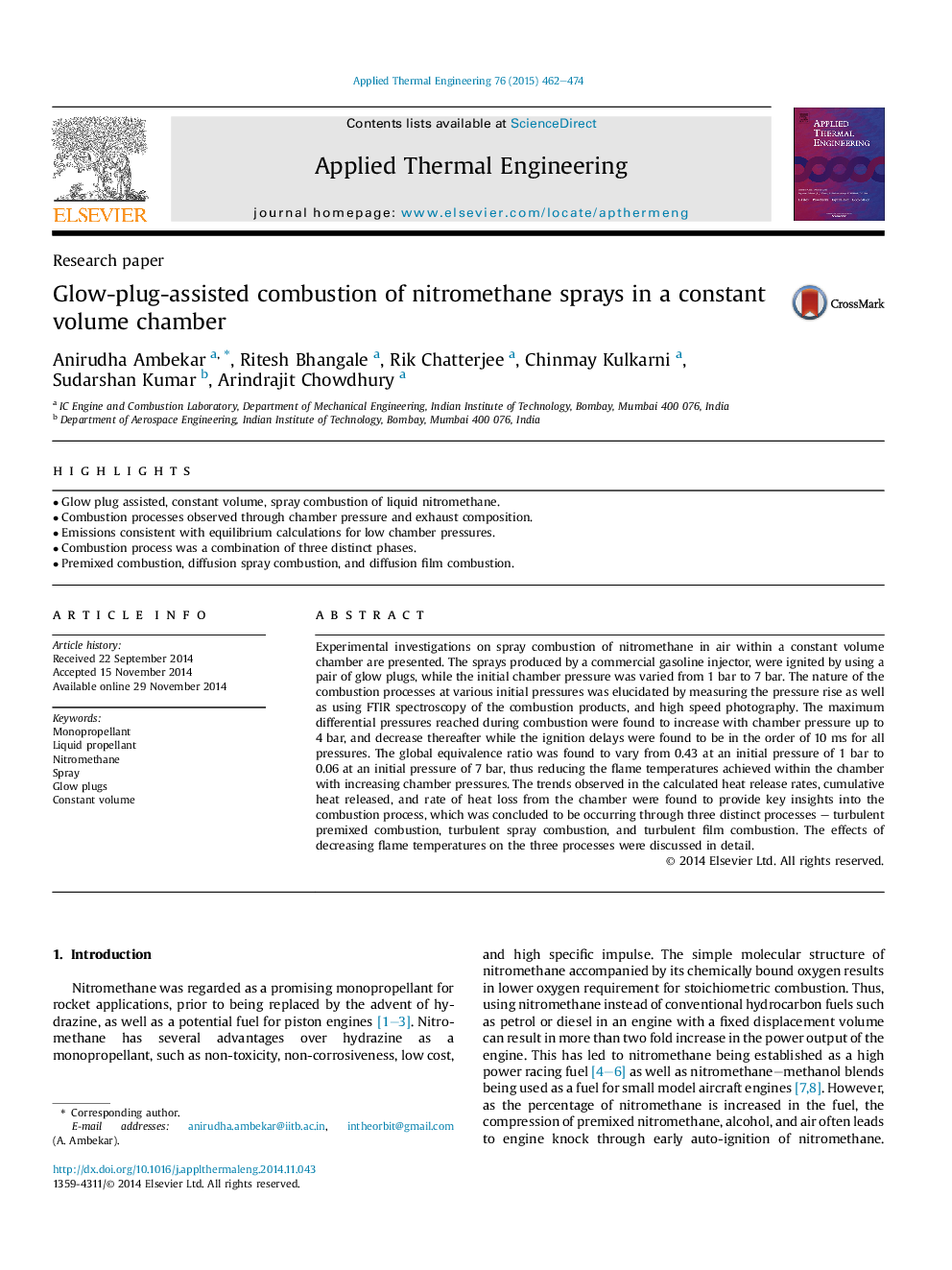| Article ID | Journal | Published Year | Pages | File Type |
|---|---|---|---|---|
| 646025 | Applied Thermal Engineering | 2015 | 13 Pages |
Abstract
Experimental investigations on spray combustion of nitromethane in air within a constant volume chamber are presented. The sprays produced by a commercial gasoline injector, were ignited by using a pair of glow plugs, while the initial chamber pressure was varied from 1Â bar to 7Â bar. The nature of the combustion processes at various initial pressures was elucidated by measuring the pressure rise as well as using FTIR spectroscopy of the combustion products, and high speed photography. The maximum differential pressures reached during combustion were found to increase with chamber pressure up to 4Â bar, and decrease thereafter while the ignition delays were found to be in the order of 10Â ms for all pressures. The global equivalence ratio was found to vary from 0.43 at an initial pressure of 1Â bar to 0.06Â at an initial pressure of 7Â bar, thus reducing the flame temperatures achieved within the chamber with increasing chamber pressures. The trends observed in the calculated heat release rates, cumulative heat released, and rate of heat loss from the chamber were found to provide key insights into the combustion process, which was concluded to be occurring through three distinct processes - turbulent premixed combustion, turbulent spray combustion, and turbulent film combustion. The effects of decreasing flame temperatures on the three processes were discussed in detail.
Related Topics
Physical Sciences and Engineering
Chemical Engineering
Fluid Flow and Transfer Processes
Authors
Anirudha Ambekar, Ritesh Bhangale, Rik Chatterjee, Chinmay Kulkarni, Sudarshan Kumar, Arindrajit Chowdhury,
